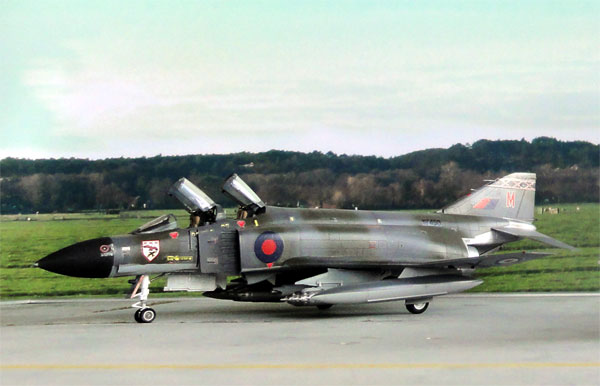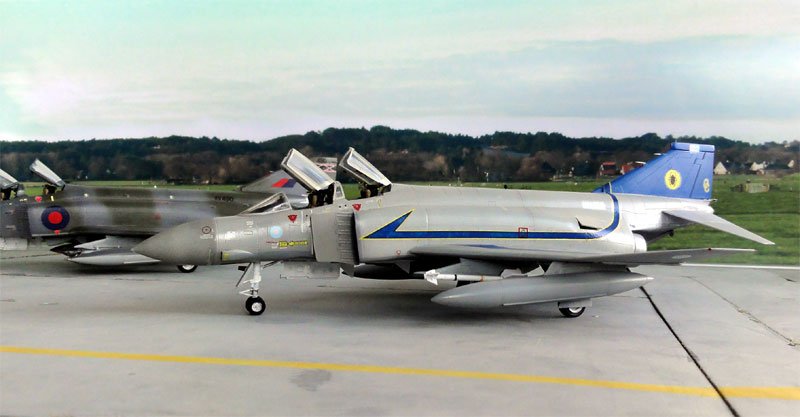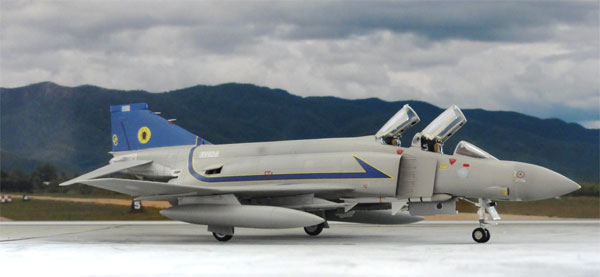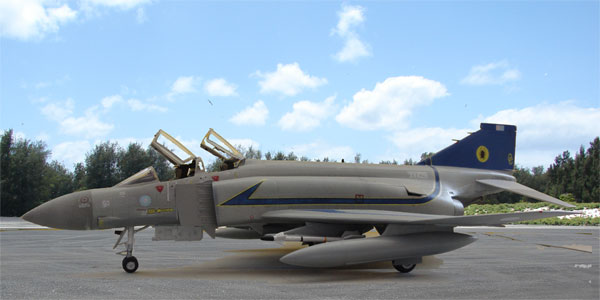Fujimi
McDonnell Douglas F-4 models in 1/72 scale

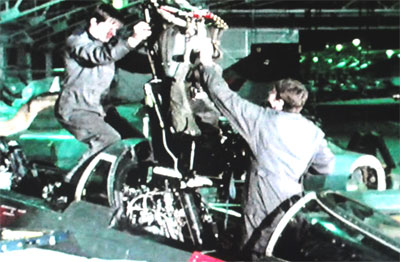
The McDonnell F-4 Phantom II was developed as all-weather, long-range supersonic jet interceptor fighter/fighter-bomber end nineteen fifties. (It was a completely different aircraft than the olde Phantom I). It had a two man crew and two powerfull engines enabling a speed of over Mach 2.2. It set many world records.
The Phantom was widely used from 1960, operating from US aircraft carriers and also later the USAF used the type. First, it was only armed with missiles and could carry bomb loads, but the Vietnam war showed that an internal gun was a necessity. So later versions like the F-4E got a M61 Vulcan rotary cannon. Many F-4's were also sold overseas and were in use in Persia, Germany, Japan and the United Kingdom (in a different version).
After the Vietnam war the Phantom remained in wide use as reconn and Wild Weasel (suppression of enemy air defenses) roles. The US Navy got the F-14 Tomcat and the final USN Phantom left in 1984. The USAF F-4's were still used in the 1991 Gulf War, finally leaving US service in 1996. Over 5,000 aircraft were build. It is still in service with the JASDF in the 2013.
For the British
Fleet Air Arm (Royal Navy) needed a replacement
for the Sea Vixen in around 1964. The F-4 was a candidate but needed many
modifications as the British carriers were much smaller than their American
counterparts. Based on the USN F-4J, the British FAA Phantom got the designation
F-4K / FG.1. It got Rolls Royce Spey engines that required larger air intakes
and a bigger bulged lower fairing at the exhausts. Also this type got an extendable
nose wheel leg so that it could operate from British aircraft carriers.
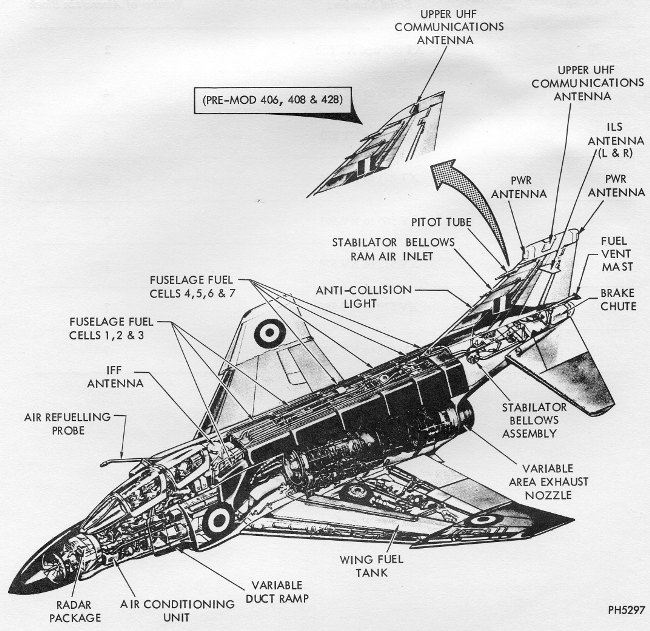
In 1965 the
Royal
Air Force (RAF)
also decided it required
the F-4 Phantom as the TSR-2 was cancelled. The RAF version was based
on
the FAA version and given the designation F-4M. It got the many
modifications as well (except the extendable nose gear). The British
Phantoms were
also referred to as FG.1 for the fighter/ground attack role and Phantom
FGR.2 for the fighter/ground attack/Reconnaissance role.
The RAF also
used the Phantom FGR.2/ F-4M during the Falkland war in the nineteen eighties.
They were dispatched to the islands and based at Stanley. At the same time
some second hand US NAVY F-4J's were purchased for use in the UK. Delivered
in 1984, their designation was F-4J(UK). The Tornado replaced the UK F-4
finally in 1992.

- for the FAA (Rotal Navy) Phantom look at the F-4K page here...
- for the Japanese F-4EJ look here (1/32).... and here (1/72)...
- for the US MARINES Corps Phantoms look here....
- for the Royal Air Force F-4 Phantoms.. look at the information below >
The Fujimi range of F-4 Phantoms are one of the finest 1/72 scale models kits of this aircraft type available. Released about 1987, the Fujimi kits appeared in many different kits with various versions carefully captured. Some kits contained not only plastic but also etched metal and some with casted metal parts ("high grade").
All these kits have very fine recessed panel lines and good decals. Cockpit detailling is fine with raised details and nice seats. Only some minor additions of sprue and tiny bits are required to get an excellent cockpit representation.
The F-4M and F-4K kits are both fine
and need minor filling only. Each kit can be assembled straight out of
the box giving a nice model. See specific comments below.
After applying the basic colour schemes,
add the decals and finally a protective coat of Johnson Future/Pledge.
Several releases of these 1/72 models were made way back in about year 2006. They are shown below....

F-4M (FGR.2) of RAF 29 Squadron
Fujimi F-4M # H-9 kit
This kit was bought for 7 GBP during
a trip to London in 1987. It was a big improvement to the older Matchbox
and Hasegawa F-4 kits for a British Phantom.
The Fujimi kit has fine plastic parts. The interior is nicely done. Stores include Sparrows, underwing fuel tanks, central EMI camera pod, central SUU-23 gunpod! and rocket pods for under the wings.
Overall colours of the cockpit interior are:
Other scheme colours of BSC381C used are:medium grey panels; black instruments; Martin Baker seats: generally black with tan/olive drab harnesses, safety harness black, yellow/tan survival packs; padding side walls are olive green; cockpit floors: black;
NOTE: Modern paints for these colours are also available nowadays, like various acrylics.dark sea grey - 638: used was Xtracolor X4 enamel dark green - 641: used was Humbrol 163 enamel light gey - 627 for the lower surfaces: used was in those days "Precision Paints" M26 ; current paints are
Usually a black nose radar radome
and metal areas near the exhaust pipes and on tailplanes
Wheelbays / interiors: gloss white;
Before the period of 1973 usually
blue-white-red roundels were used and later on the blue-red roundels.
The kit roundels were replaced, otherwise the scheme from a Modeldecal set 30 were used seen here:
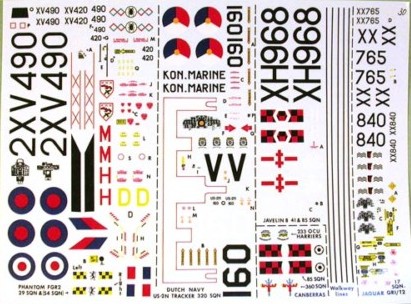
![]()
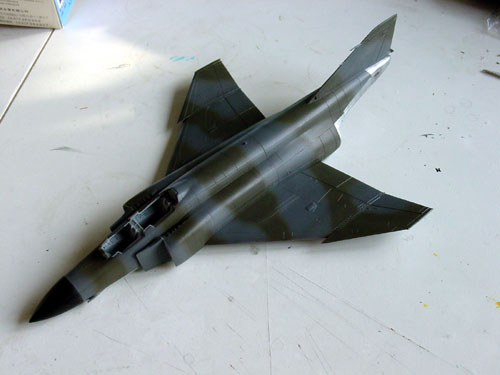
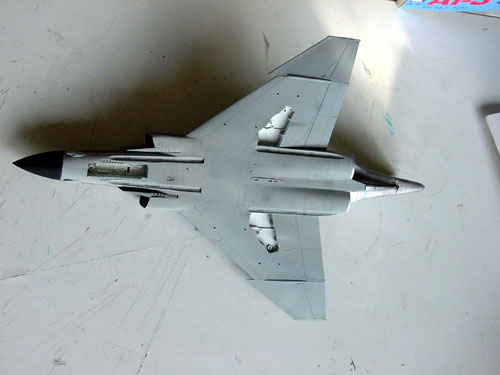
as seen
here.. I forgot to remove central hardpoint/pylon... better read the instructions!

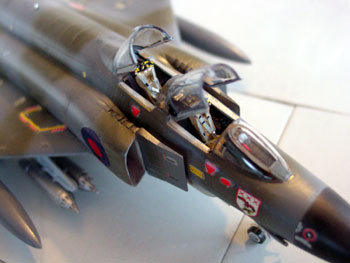

note the tiny rear view mirror fairing
on top of the rear canopy
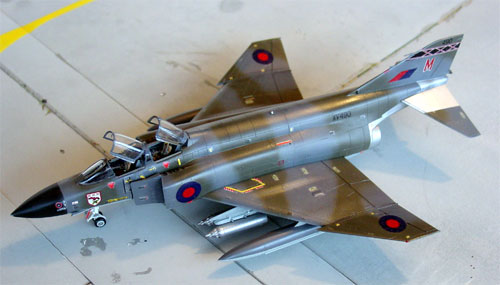
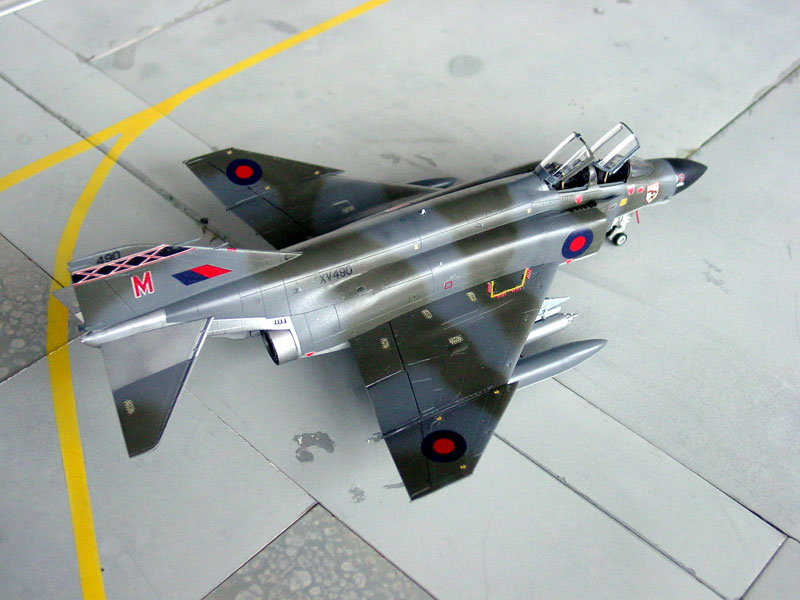
These RAF aircraft were kept in very
good condition so model weathering was kept to a minimum.


well
shown are the typical Rolls Royce engine exhausts, well depicted in the
Fujimi model

the central gun pod and rocket pods were also added and are seen here
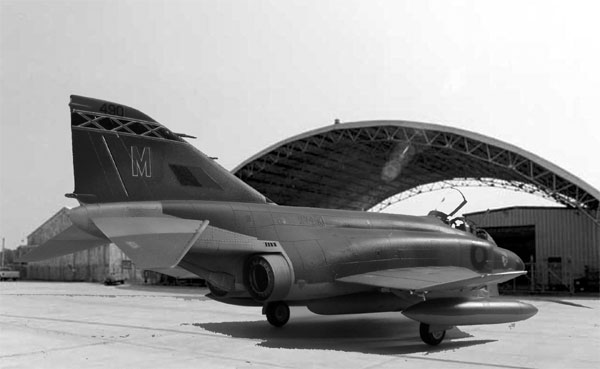
Fujimi #3 F-4M/ FGR.2 "Royal collection kit"
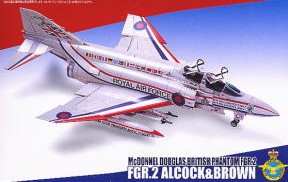
The Alcock and Brown kit decals are good but were not (yet) used; Modeldecal set 95 was used.
(2) F-4M (FGR.2) of RAF no 228 OCU based at Leuchars, Scotland around 1988
Modeldecalset
95 was used for this 228 OCU:
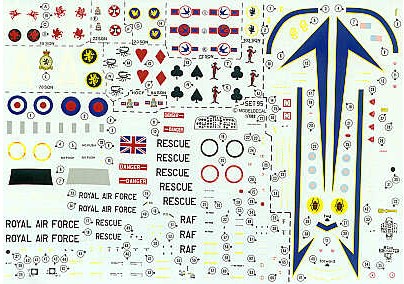
This kit has some metal parts, one of the first Fujimi kits that had those with a tiny fret included for canopy edges and mirrors and cockpit interior. Stores for this kit #3 includes Sparrows, underwing fuel tanks and a central fuel tank.
The interior is nicely done.
Overall colours of the cockpit interior
are:
The optional open panels #5 / 6 are a nice touch. They are red on the inner surfaces.medium grey panels; black instruments; Martin Baker seats: generally black with tan/olive drab harnesses, safety harness black, yellow/tan survival packs; padding side walls are olive green; cockpit floors: black;
Side intakes parts #11 in step 7 need some sanding and filling.
In step 9 remove the central tank pylon as indicated.
Other scheme colours used were:
NOTE: Modern paints for these colours are also available nowadays, like various acrylics. A little "pre-wash" was used by sparying some mat black stripes on the grey before applying the top grey coat. This gives a little deep weathering effect.Barley grey (medium grey BS4800 18B.21): Humbrol 166 enamel was used here. medium sea grey areas on wing panels -637-: used was in those days Humbrol 165 enamel (or Compucolor CBC6); light grey -627- lower surfaces: used was "Precision Paints" M26;
Wheelbays / interiors: gloss white;
Nose radome: a mix of grey
and brown.
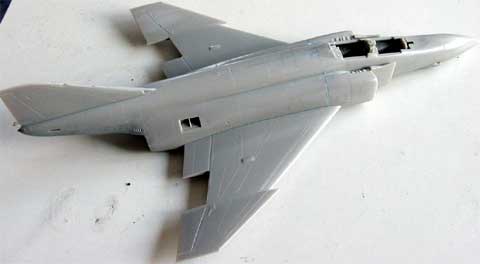
note the drooped flaps
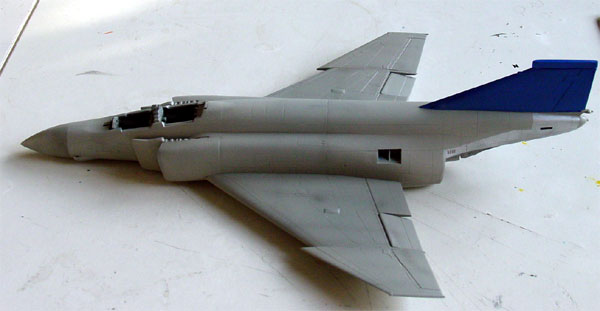
and the finished model...
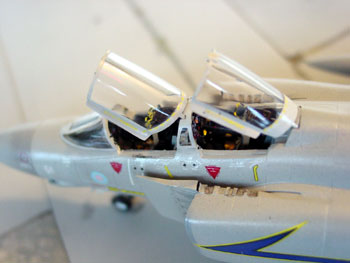
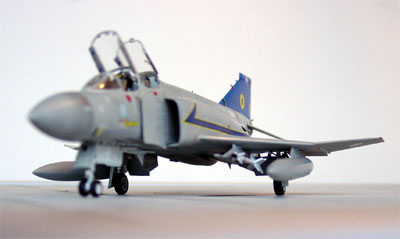
details of the cockpit canopies and
Sidewinder missiles fitted

the FGR.2 ECM fairing on the fin
top is also evident
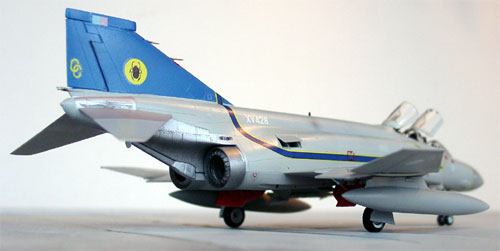
note the opened AUX door for the
Rolls Royce engines
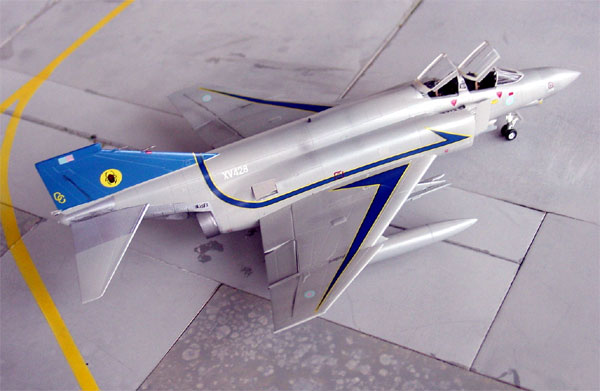
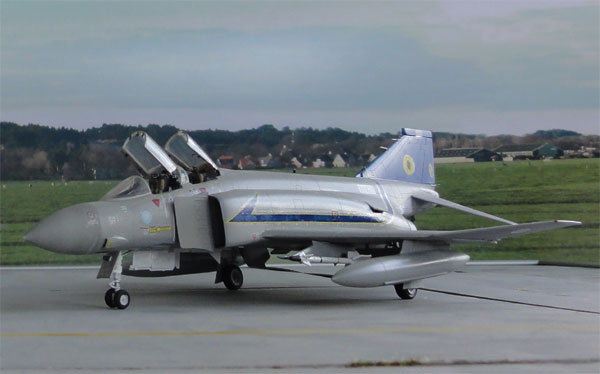
A couple of nice Britsih 1/72 Phantoms
in the model collection. Also look here at the Royal
Navy F-4K....
For a Japanese ASDF Fujimi F-4EJ
kit look at the "Japan page" here....
![]()
References:
British Phantoms:
- Air international magazine volume 15, pages 282-300
- Aircraft illustrated 1978, pages 392-397
- Aircraft illustrated 1987, pages 346- 352
- Ian Allan Special, RAF Phantom F-4M
- Shorts, in Putnam series
- Wings of Fame, Volume 15, pages 20..
See also http://en.wikipedia.org/wiki/McDonnell_Douglas_F-4_Phantom_II
Back to 1/72 models
(c) Copyright "designer"/ All rights reserved. Your comments are welcomed by webmaster
Created this page
April 5, 2013
